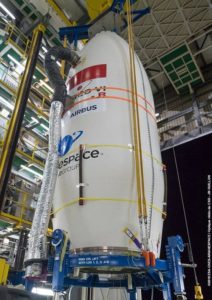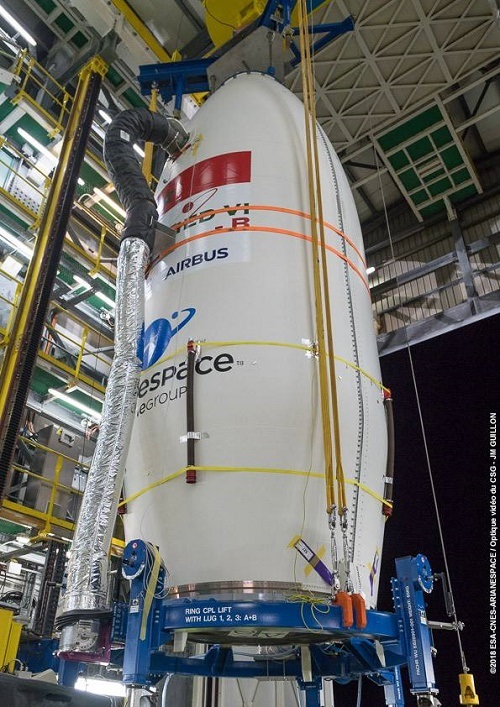 Morocco’s second Earth observation satellite will lift off on November 21st from the Guiana Space Center in Kourou, French Guiana (South America).
Morocco’s second Earth observation satellite will lift off on November 21st from the Guiana Space Center in Kourou, French Guiana (South America).
Built by a consortium comprising Thales Alenia Space and Airbus, the MOHAMMED VI – B satellite will be mostly used for mapping and land surveying activities, regional development, agricultural monitoring, the prevention and management of natural disasters.
It will also be used for monitoring changes in the environment and desertification.
Being complementary, the MOHAMMED VI – A & B satellites, will jointly enable a faster coverage of zones of interest.
The two satellites, which can take high-resolution pictures under any weather condition even of small objects, are monitored from the ground station in Rabat.
The two spacecraft will play a key role in the implementation of Morocco’s national strategies for socio-economic development, especially those relating to the agricultural sector, one of the main pillars of the Moroccan economy.
They will also enable the North African Kingdom to improve the management of water resources, prospect underground water, improve cartography and topography, and support the control of littoral zones, infrastructure and transport networks.
Arianespace provides launch services for all types of satellites into all orbits. It has orbited more than 580 satellites since 1980, using its family of three launchers, Ariane, Soyuz and Vega, from launch sites in French Guiana (South America) and Baikonur, Kazakhstan.
Arianespace is headquartered in Evry, near Paris, and has a technical facility at the Guiana Space Center, Europe’s Spaceport in French Guiana, plus local offices in Washington, D.C., Tokyo and Singapore.
